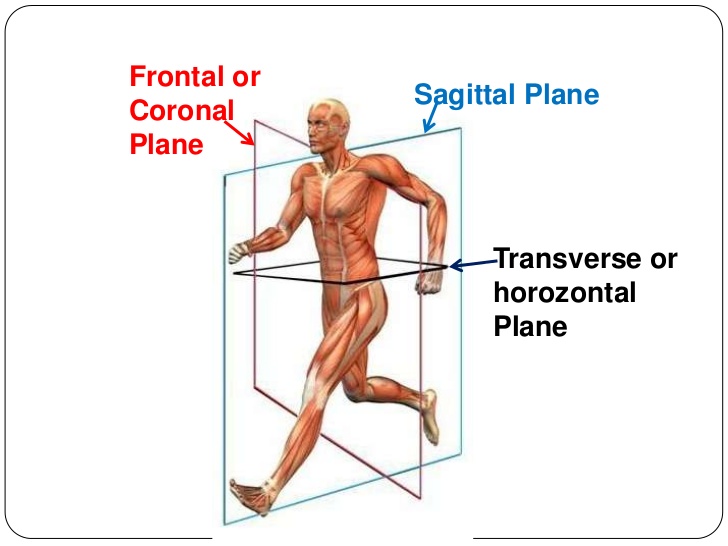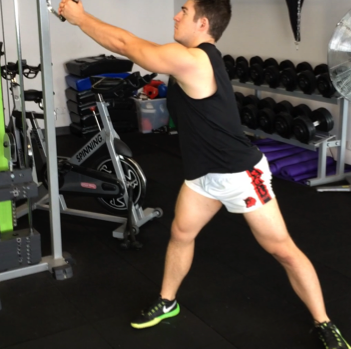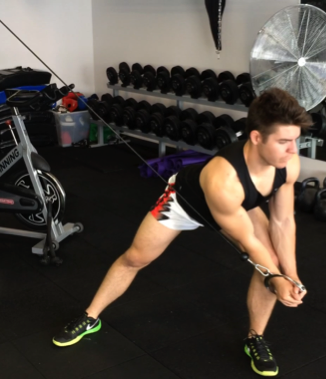Strength Training to Improve Tackling
Improvement in body combat, be it bumping or tackling, or absorbing one of these effectively, are 2 common reasons young guys initially get into strength training for football. Not only will a little more muscle help you to absorb hits and stand your ground better, but it will give you more strength and make you more effective in laying a good solid tackle – provided the training is done correctly. But what is the best way? How can I strength train with exercises that will specifically carry over to tackling ability?
For starters, it wont be improved by doing set after set of various bicep curl variations. Whilst a bicep curl will put a fair amount of work through the front of your arms, the reality is that this is still only a very small isolated area. Whereas tackling on the other hand, is actually a full body movement, and also executed at speed. Therefore, on order to train for such a movement, you must look to exercises that;
- Use many of the same muscles that you will use in a tackle – working together to perform a task as a functional unit, and
- In some cases mimic the movement pattern of a tackle – not necessarily exactly the same, but very similar in general pattern of movement.
So what are the main muscles that are used in a tackle? Like I said before, a tackle in football is a full body exercise, where the entire chain from feet, all the way up the legs, hips and trunk, and then all the way out through the arms and hands, contribute to the execution of the movement. So this is far from just an ‘arms’ task that will be improved by ‘making the arms stronger.’ Certainly stronger arms will help – and with good solid compound exercises like pull ups and bent over rows (not bicep curls), however this is just the start.

The reality is that in most (depending on your position at the time and what the opponent is doing) properly executed tackles, the primary contributor will be the hips and torso. A tackle can be thought of in its most simplified terms as a powerful hip movement and a rotation of the torso. Like I said just before, tackles can take on various different forms and looks, but these 2 elements are almost always present to some degree in a tackle, and form the platform for almost all of them. Then from there, the arms contribute in their grip and execution of the movement that originated from the hips and torso.
From the other articles and books, you are already well versed in powerful hip drive exercises like deadlifts, kettlebell swings and squats, as well as other compound lower body exercises like step up and lunge variations. These contribute to that powerful hip and lower body that we are talking about, and then compound upper body exercises (pull ups, bent over rows, etc) provide the upper body strength that will contribute to the upper body portion of a tackle. So that’s good, these general compound exercises are useful in laying a foundation of strength that is usable in a tackle. But now, we need to train these muscles in a certain way to execute the movement of a tackle.
As mentioned earlier, a tackle has a large rotation component. Furthermore, a tackle is a skill that takes place in all 3 planes of movement. This is an important thing to note, as most of the compound exercises that we mentioned only take place in one plane of movement – the sagittal plane (we cover this in far greater detail in the strength training book.) In other words, by not including exercises that more closely mimic a tackle, both in that standing-rotation pattern but also in the planes of movement, the level of carryover from strength developed in other compound exercises will be limited.

The human body is required to operate in 3 planes of movement - in life in general, bus especially in a sport like footy. Unfortunately most strength training exercises are being performed in the sagittal plane only. This needs to change.
This is where the cable woodchop variations, and other similar standing cable rotation exercises come into their own. They are executed in a standing position, where your hips and legs will provide strong contribution to the movement (in fact they initiate them), there is plenty of rotation, and best of all, there is a large amount of work in the other 2 hardly trained planes of movement – the frontal and transverse planes.


These exercises can take on any one of a number of variations, where something as simple as adjusting the height of the pulley slightly will change the exercise to a new stimulus – which is great, as no 2 tackles are the same. Even adjusting where you are standing relative to the line of pull will have a profound effect on the way you have to work.
With such an exercise, you must of course start fairly slow and with basic positions while you learn the mechanics and the movements. Indeed, in the program section of Functional Strength Training for Australian Rules Football we included just 2 (despite having demonstrations for other rotation exercises in the exercise catalogue section) - woodchops and reverse woodchops – as these 2 exercises provide a great initial foundation of this full body rotational movement. However you can then progress to more explosive movements or more advanced ones which involve stepping and swapping sides each repetition.
So you can see that a tackle is far more than just a pull with the arms, and as a result, it needs to be trained as much more than just a simple arm movement. However, by sticking to compound exercises of the upper and lower body (in particular the hips/glutes) and then integrating these with full body standing rotational exercises like woodchop variations, you will be putting your hard work in the weights room to good use, with a high level of functional carryover to the tackling in a game.
Strength Coach

